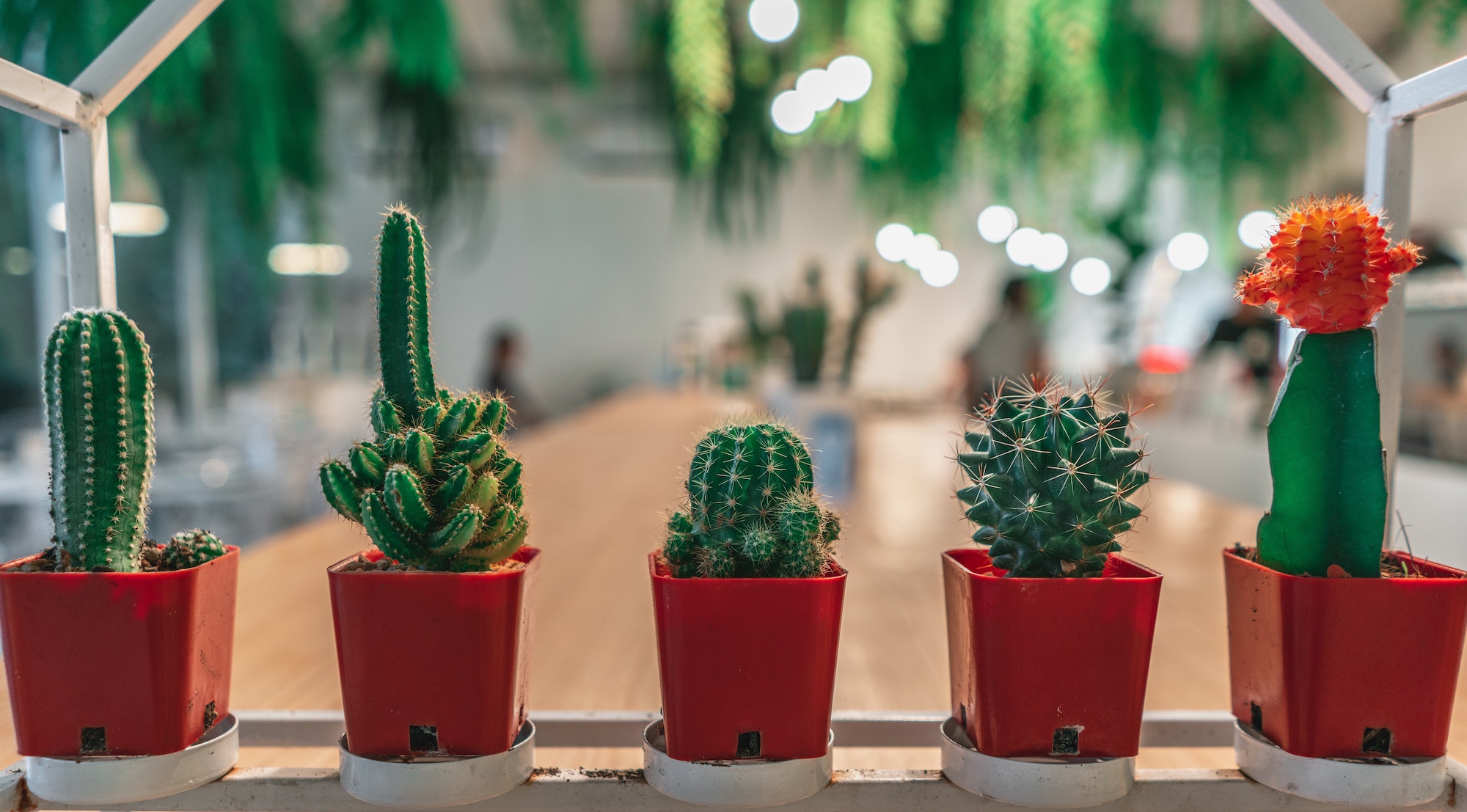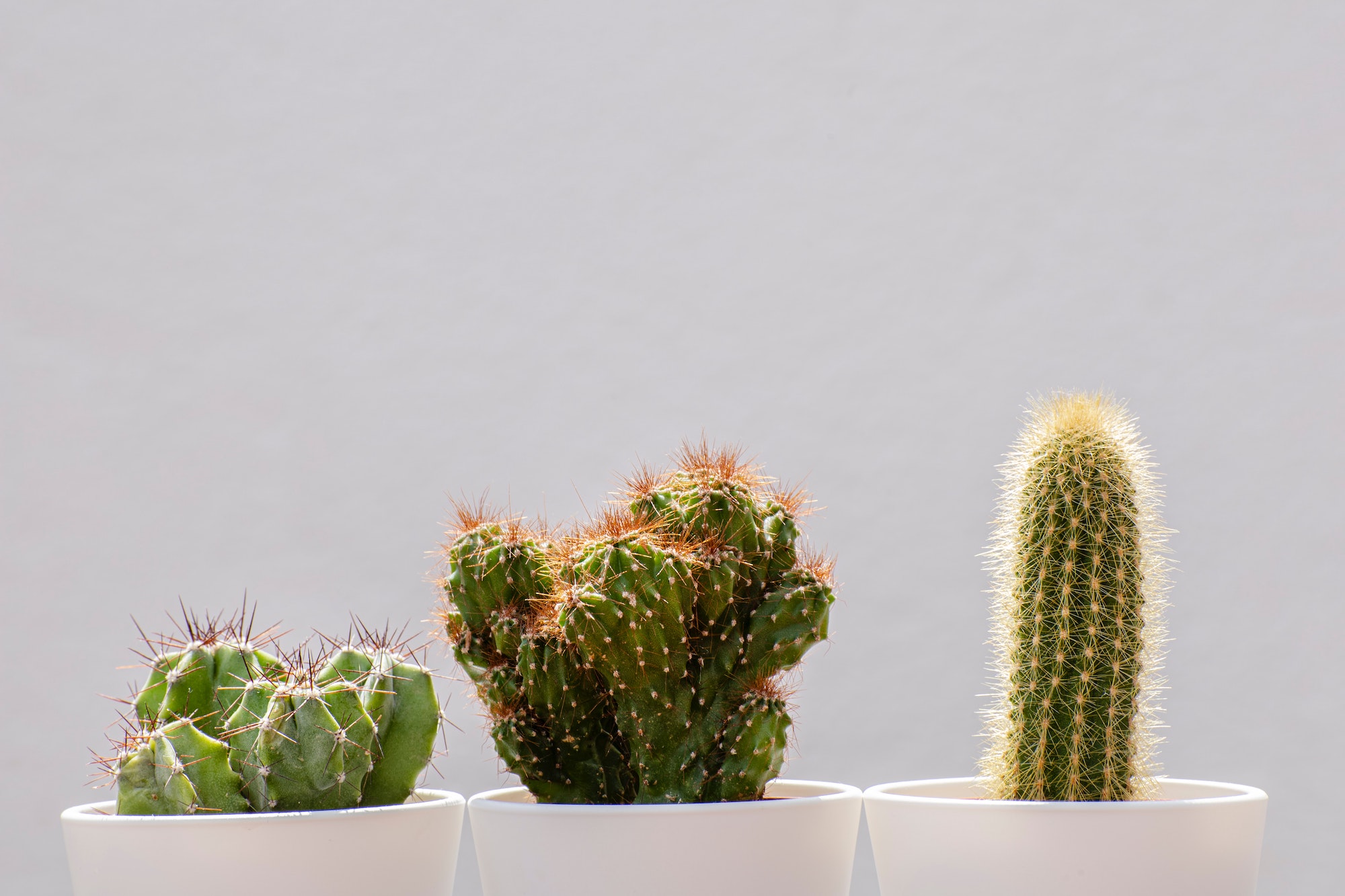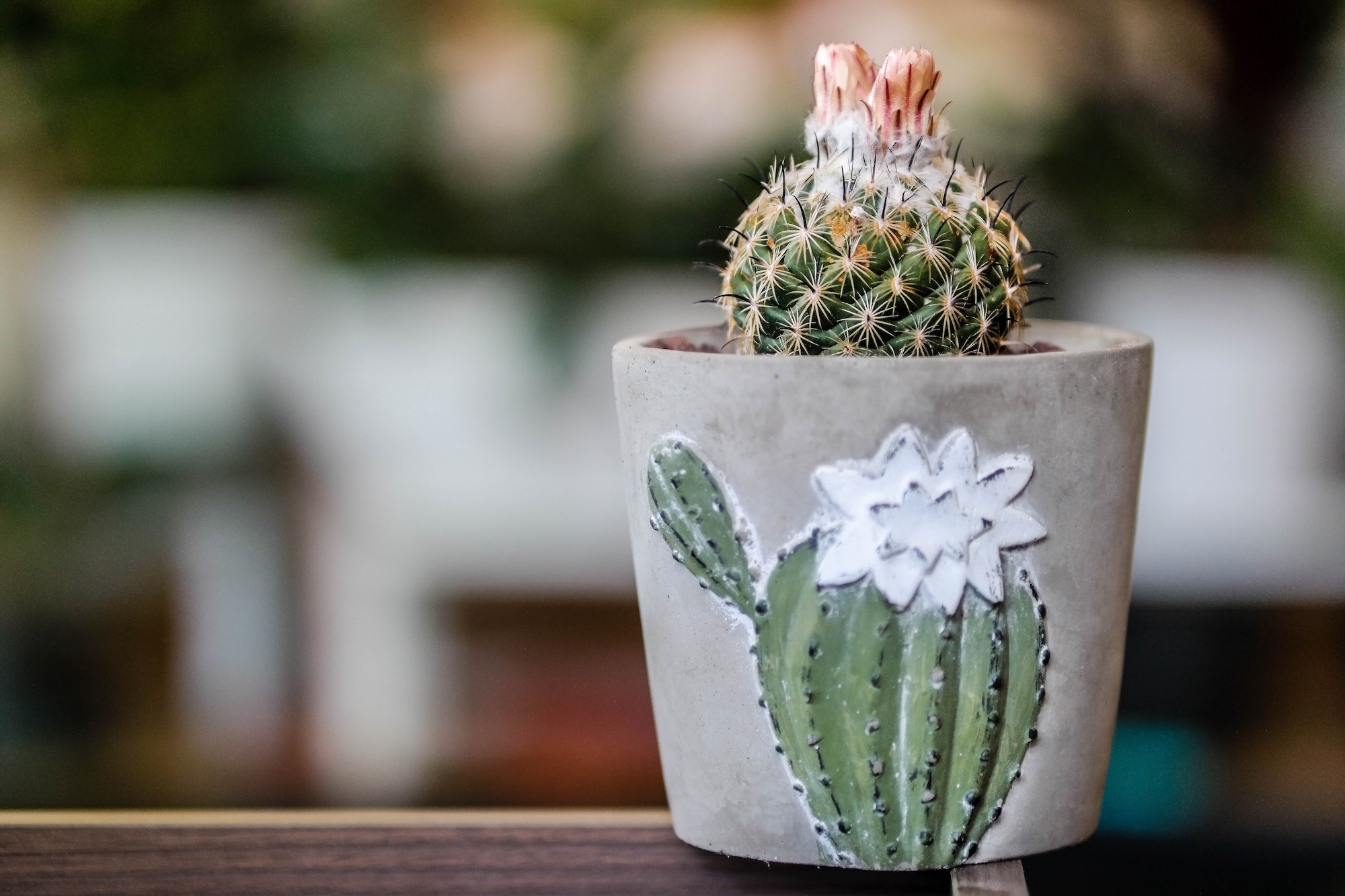Whether you have an array of fun plants in and around your home or are looking to become a first-time plant parent, adding some living greenery can be a great way to up the vibrancy and appeal. One great, low-maintenance option you might not have thought of is the good ol’ cactus. Native to hot, scorching deserts, it is easy to see why this spiky little character will do just fine in and around your home.

Are cactuses hard to take care of?
Native to the hottest regions of both North and South America, the cactus plant is a natural survivor, with the ability to thrive through scorching days and freezing nights. Although varying in size, shape, and color, cactuses are all-in-all very easy to care for. They are among the most popular houseplants and garden plants due to their low-maintenance nature. Beyond their cool and exotic appearance, some other great benefits of cactuses and why they are so low-maintenance include:
- No water, no problem. Some cactuses found in nature can last two years without water replenishment. Once a cactus fills up its thick stems with as much water as it can hold, it is set for a very long period of time. This is because cactuses do not have leaves, unlike most other plants. Leaves are where water disperses and evaporates, causing a higher need for consistent water replenishment. Since cactuses store their water, they can be watered much less than the average plant.
- Shallow root system. A shallow root system may not seem like a big deal when you have ample yard room, but it can be a great feature in houseplants and ones that need to be grown in tight, outdoor spaces. The shallow root system of cactuses means that you don’t need a large container for them when used indoors. It also means that you can plant your cactus as a decorative feature next to your house, driveway, or walkway without the risk of the roots disrupting any underground cables.
- Many are cold hardy. Although you probably think of unbelievably hot temperatures and dry air when you think of cactuses, there are actually quite a few types that can thrive all the way up to Canada. Some great cold, hardy cactus plants include: echinocereus, agave, cholla, and escobaria.
- Put them anywhere and watch them flourish. Whether you want to place your cactus in your living room by the window or on your kitchen counter, this plant will have no problem thriving. All cactuses really need, especially houseplant varieties, are occasional waterings, plenty of direct sunlight, and some porous soil to provide you with a consistently-beautiful view.
How do you keep a cactus alive?

Although these spike-adorned, exotic-looking plants seem like they could be a real handful, they are far from it. Simple, minimal effort is required to keep your cactus healthy and cared for, indoors or out. Once you have your cactus set up in a good location, all it takes is some occasional watering to keep it alive. There is no pruning, trimming, mulching, or fertilizing needed. If you want to see just how easy it is to get your cactus set up in its forever home, check out these tips:
- Plant your cactus in porous soil for the best water filtration. You can find potting soil designed just for cactuses at your local gardening shop.
- Ensure your cactus has access to enough light. Typically, about eight hours of sunlight per day is more than enough for your little plant.
- When it comes to watering your cactus, the frequency depends on whether or not your cactus is in the growing stage. If your cactus is still growing to its maximum size, you should water it once a week. Once you have a mature cactus, you can reduce the frequency.
How often do you water a cactus?

Watering a cactus occurs less frequently than most other plants, but can still depend on the type of cactus you have. Certain indoor cactuses may require more frequent watering, while others may not. Typically, if you have a flowering cactus, it requires consistent weekly watering, even when fully grown.
Most outdoor varieties that are built to be hardy can flourish with monthly waterings. Overall, indoor cactus thrive with weekly waterings, and outdoor cactus thrive with monthly waterings, but it can be helpful to do research on your specific variety to find the exact answer.
Does a cactus need sunlight?
Since the cactus plant is native to hot areas, it is easy to understand why cactuses love the sun. Most cactus varieties can thrive on four to six hours of direct sunlight, but at least eight hours is ideal. Although the cactus can live for short periods of time without sunlight, it must receive enough daily sunlight to survive — just like any other plant.
As you can see, whether you’re a plant pro or have never taken care of a living thing before, cactuses are a great option. With the ability to flourish with little water, harsh temperatures, and varying environments, it is easy to see that this fun plant thrives on neglect. Available in many styles, shapes, sizes, and colors, you can find a cactus plant to match any space in your home. No matter what kind of cactus you get, you will love this undeniably unique and low-maintenance plant.


